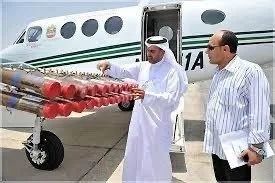Chapter 7: Water
You can't have a city without water. And they don't have any
07.09.2022 - 07.09.2022 104 °F
Chapter 7: Water
September 7, 2022
Nothing, not oil or gold or forests or diamonds, is as important to the future of the human race as is water.
This region, the business and financial capital of the Persian Gulf, consumes 147 gallons of water per person, per day. The world average is only 47 gallons per day. (These numbers, reported in last week’s New York Times, are according to a 2021 research study funded by the Emirates.) Why do they use so much water? Private households suck up one quarter of it--one of the largest contributors in that sector is air conditioning which uses large quantities via chilled water pumps. Residents have the world's highest per capita consumption of bottled water which is locally produced. It takes 3 liters of desalinated water to make one liter of bottled water. Garden and landscape watering also grabs enormous amounts of water.
Agriculture consumes two-thirds of that water. Everything here requires constant irrigation and the booming population requires more and more food. Too much of the irrigation here is wasteful spray irrigation rather than water-conserving drip irrigation. Ten percent of that water is used by industry to cool and clean machinery.
But, wait. This is the desert. Where in the world could all of that water come from?
The wide angle on the left gives you an overview; the closeup on the right shows that either the desert or the salt-water sea is everyone's next door neighbor.
Desalination plants, each costing $1 billion or more to construct and sucking up prodigious amounts of energy to run, do the trick providing almost 99% of Dubai’s potable water. There are 35 such plants across the UAE with the largest being here in Dubai.
It works like this: salt water from the Arabian Gulf is pumped into the Dubai Aluminum factory where it is used to cool the smelters. From there, it is piped to the Dubai Electric and Water Authority plant next door where it is used for power generation and then desalination. After the salt has been removed, that water flows into the municipal water system for drinking, bathing, cooking, etc.
Perhaps fearing that to be unsustainable over the long term, a plan is in the works to augment the system: Cloud Seeding. They’re going to make it rain. This gets very politically complicated very quickly. Next door neighbor Iran has charged that Israel and the UAE are depriving them in Iran of much needed water—from the clouds. It turns out there may be a kernel of truth to that.
Abdulla Al Mandous is the director of the National Center of Meteorology and Seismology here and the leader of its cloud-seeding project. A part of that is a team of nine aircraft pilots who are on standby to take flight whenever the right type of clouds form.
This photo, courtesy of the National Centre for Meteorology and Seismology, was published on The National News website. The article there points out that drones have been added to the fleet as well. They seed appropriate clouds with silver iodide and another substance recently patented for this purpose, injecting them into the base of the clouds where it then is swept upward by powerful updrafts. The idea is simple: that makes it rain. The outcome of all this is more difficult to discern. For the record--and we have only been here for four days--there has not been a cloud in the sky.
Three summers ago this cloud seeding scheme allegedly generated torrential rains in Dubai which flooded residences and even the Dubai Mall. Mr. Al Mandous is quoted in the New York Times as saying that just last year cloud seeding may have been responsible for a storm that produced 5.6 inches of rain in three days. That’s more than the UAE usually gets in an entire year. On November 10, 2019, a Dubai Development Company EMAAR spokesperson tweeted: “Dubai Mall was affected by the heavy rainfall, causing leakages in limited areas. We are working to contain all leakages and the mall remains operational and open to the public. Mall staff are on the ground, ensuring the visitor experience remains unaffected.”
Nobody that I can find is blaming this or anything else for the July 27-29 floods north of here which resulted from the region’s heaviest rain amounts in over a quarter century. In fact, they say, climate change is the culprit—and that is according to the National Centre of Meteorology.
Tonight we had dinner with old friends. They took us to their club: a golf club. We wonder what uses more water than a golf course. We can see it from our TAJ rooftop pool. It is luscious green. Eighteen holes plus a driving range of green expanse. Next door to it is a barren vacant lot composed of nothing but sand. The difference between the two is water.
I’ll leave you to ponder it all through Ed Sheeran’s recording of Make It Rain (written by Foy Vance) where he sings:
Well, the seas are full of water, Stops by the shore
Just like the riches of grandeur, Oh, no, no, That never reach the poor
And let the clouds fill with thunderous applause, And let lightning be the veins
And fill the sky, with all that they can draw, When it's time, to make a change
Make it rain, Make it rain down, Lord.
And then as a postscript, "but not too much."


